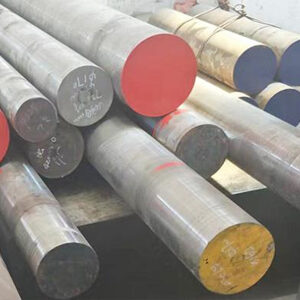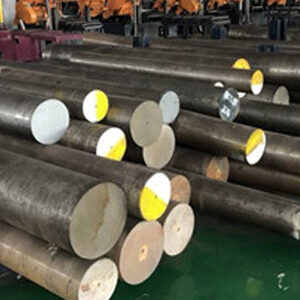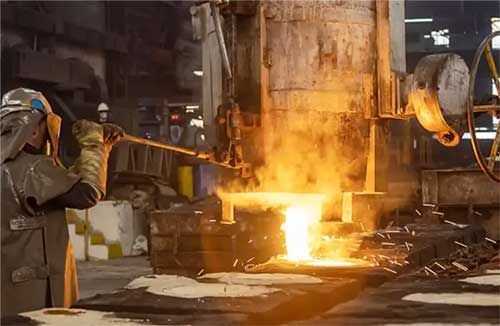Welcome to My Blog! 🌟
Before we dive into the content, I’d love for you to join me on my social media platforms. It’s where I share more insights, engage with our vibrant community, and post regular updates. Here’s how you can stay connected:
📘 Facebook: Connect with me on Facebook
Now, let’s embark on this journey together. I hope you find the content here insightful, engaging, and most importantly, valuable. Let’s explore, learn, and grow together! 🚀
Table of Contents
Introduction

M4 tool steel is a high-speed steel known for its exceptional wear resistance, red hardness, and high toughness. These attributes make it an ideal material for cutting tools, punches, dies, and other precision components that operate under high pressure and temperature. However, despite its impressive capabilities, many professionals and procurement teams still make avoidable mistakes when selecting, processing, or applying M4 tool steel.
Understanding these common mistakes is essential not only to protect the integrity of your components but also to maximize performance and cost-efficiency. In this article, we will explore five of the most frequent mistakes related to M4 tool steel and provide practical insights on how to avoid them.
Mistake 1: Misunderstanding the Properties of M4 Tool Steel
One of the first and most common mistakes is not fully understanding what makes M4 tool steel unique. Many users assume all high-speed steels offer similar properties, which leads to poor decision-making.
M4 tool steel is characterized by:
- High carbon and vanadium content, providing excellent wear resistance
- Great hardness retention at high temperatures (red hardness)
- Relatively low grindability compared to other HSS grades
These features make it suitable for high-demand applications but also present challenges in processing. Assuming it’s just like M2 or T1 steels can lead to premature tool failure or manufacturing inefficiencies.
Mistake 2: Choosing the Wrong Heat Treatment Process

Heat treatment is critical for unlocking the full potential of M4 tool steel. A mistake in this process can drastically alter the steel’s mechanical properties.
M4 tool steel typically undergoes:
- Preheating in multiple stages to prevent thermal shock
- Austenitizing at temperatures between 2150°F and 2250°F
- Quenching in oil, salt, or vacuum conditions
- Tempering at least twice at 1000°F to 1100°F
Skipping or improperly executing any of these steps may reduce hardness, wear resistance, or toughness, leading to catastrophic failure in the field.
Mistake 3: Ignoring Surface Finish and Coating Needs
Some engineers assume M4 tool steel doesn’t require coatings because of its inherent hardness. While the base material is highly resistant, coatings such as TiN, TiAlN, or AlCrN can significantly enhance performance.
Key benefits of applying coatings include:
- Reduced friction and improved chip evacuation
- Enhanced oxidation resistance at elevated temperatures
- Extended tool life, especially in dry or high-speed machining
Not evaluating whether coatings are needed is a missed opportunity for maximizing tool life and production quality.
Mistake 4: Using Inappropriate Machining Parameters

Due to its extreme hardness and abrasion resistance, machining M4 tool steel requires precise control of speed, feed rate, and cutting fluids.
Here is a comparison of machining parameters for various HSS grades:
| Steel Grade | Recommended Cutting Speed (ft/min) | Feed Rate (in/rev) | Tool Life Expectancy (min) |
|---|---|---|---|
| M2 Tool Steel | 50–60 | 0.003–0.006 | 30–50 |
| T1 Tool Steel | 40–50 | 0.002–0.005 | 20–40 |
| M4 Tool Steel | 30–40 | 0.002–0.004 | 50–60 |
Applying parameters from softer steels can result in excessive tool wear or damage. Investing in carbide tooling or high-end machinery may be necessary.
Mistake 5: Overlooking Cost vs. Performance Trade-offs
Because M4 tool steel is a premium-grade alloy, it comes at a higher price than many other steels. This leads some buyers to avoid it altogether without evaluating its performance benefits.
However, M4’s long tool life and superior performance can often offset the higher initial cost, especially in high-volume or precision applications. A proper total cost of ownership (TCO) analysis should consider:
- Initial procurement cost
- Machining and processing expenses
- Tool change and downtime frequency
- Scrap or defect rates
Avoiding this holistic evaluation can result in underperformance and higher long-term costs.
Conclusion
M4 tool steel is a highly capable material, but only when used with full knowledge of its characteristics, processing requirements, and best practices. Avoiding these five common mistakes will help you unlock the full potential of this high-speed steel.
From choosing the right heat treatment to applying appropriate coatings and machining parameters, each decision plays a critical role in maximizing tool performance and life span.
If you’re exploring whether M4 tool steel is right for your application, consider reaching out to a materials expert or metallurgist. Their guidance can prevent costly errors and ensure long-term success.
FAQ
Q1: What is M4 tool steel typically used for?
It is widely used in making punches, end mills, cutting tools, and cold work dies requiring high wear resistance.
Q2: Is M4 tool steel better than M2?
M4 generally offers superior wear resistance and red hardness but is harder to grind and machine than M2.
Q3: Can M4 tool steel be welded?
Welding is not recommended due to its high carbon content and brittleness after hardening. Brazing is a better alternative.
Q4: How can I tell if a component is made from M4 tool steel?
Material certification documents, spark testing, and chemical composition analysis are the most reliable methods.
Q5: What are the key elements in M4 tool steel?
M4 typically contains carbon, vanadium, molybdenum, chromium, and tungsten, giving it excellent hardness and wear resistance.

